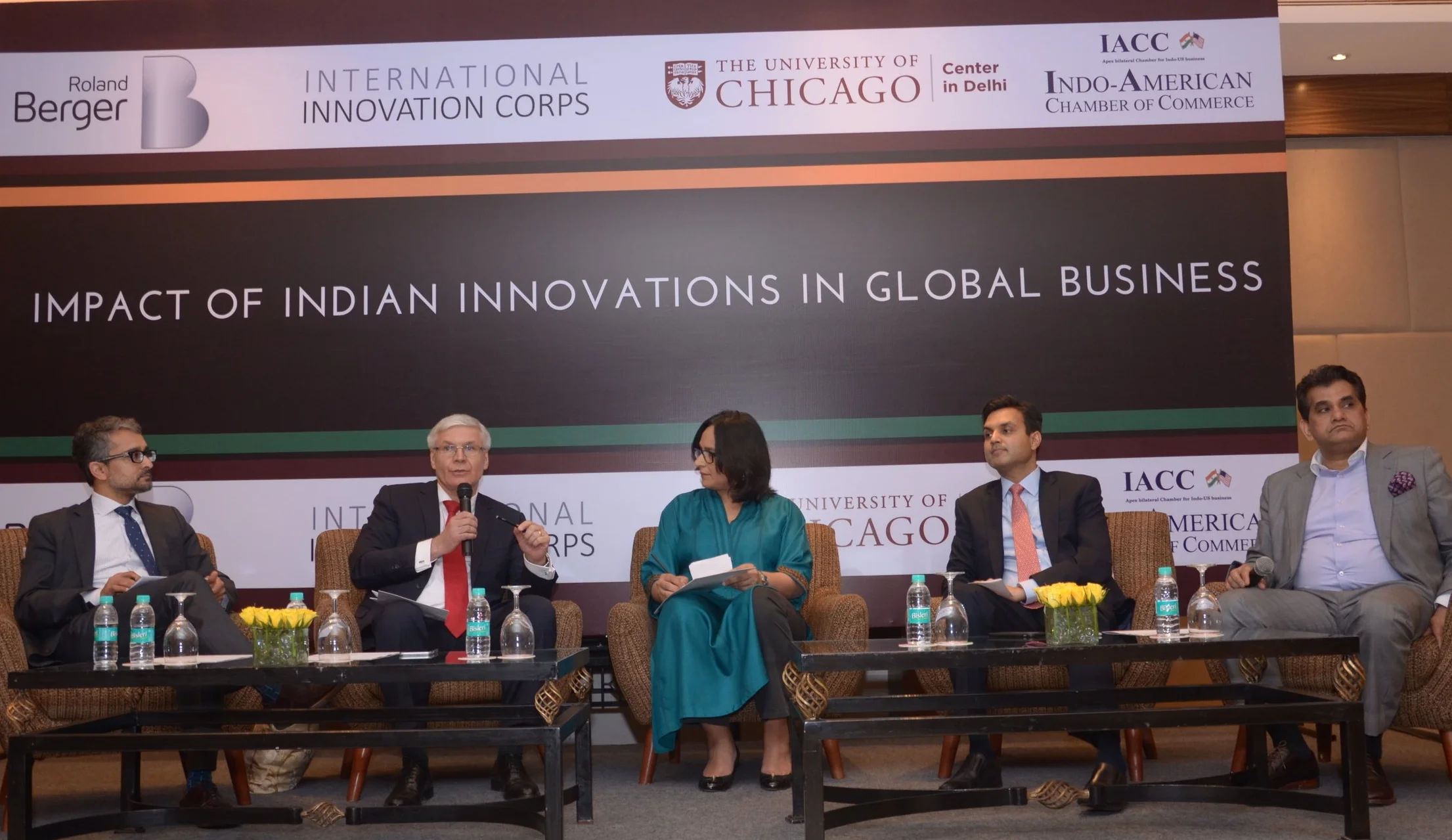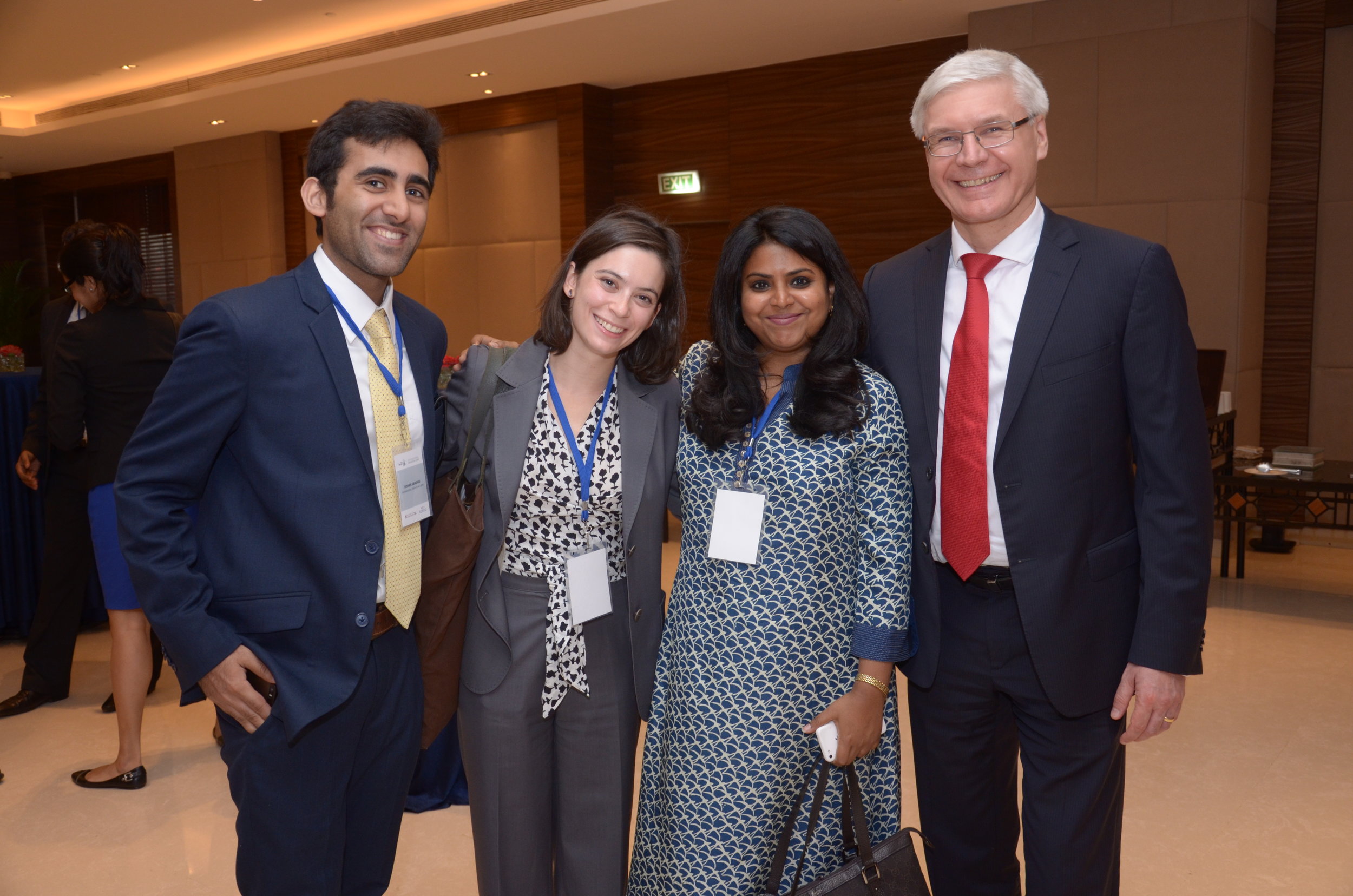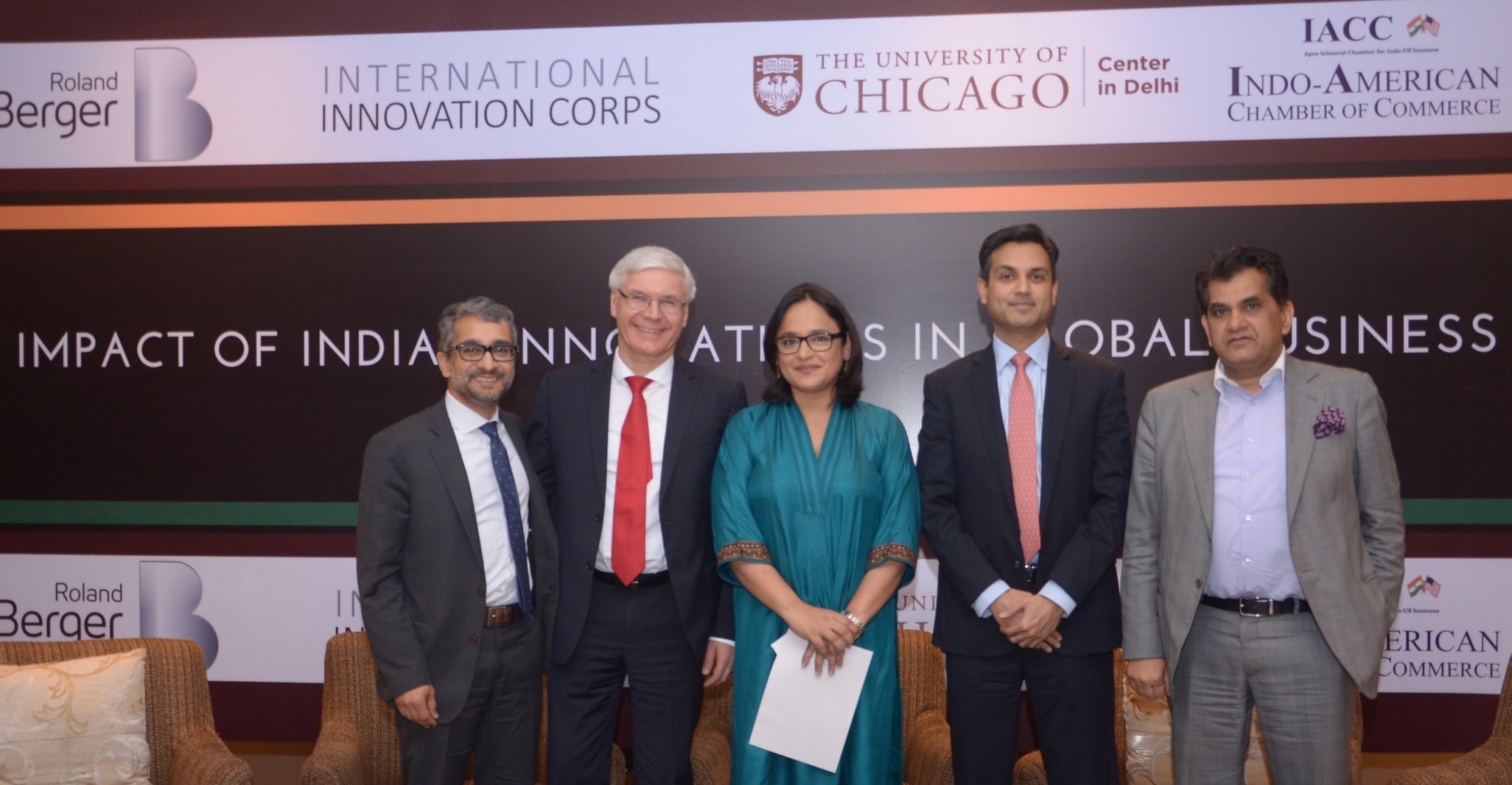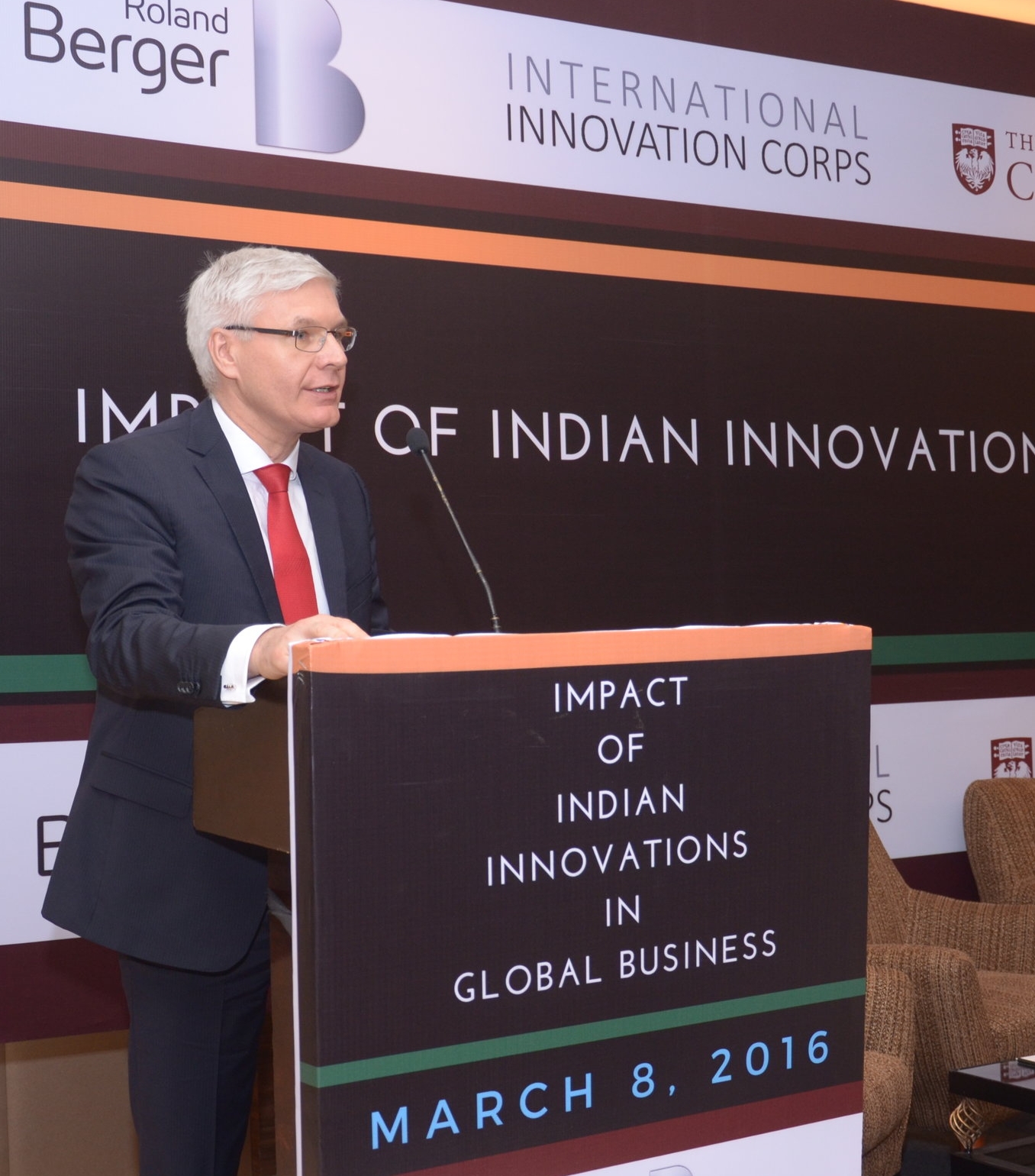India is positioned to play a unique role in an impact-oriented global economy as an innovation powerhouse. However, distinct challenges and opportunities in the Indian innovation ecosystem complicate the picture. The International Innovation Corps, in collaboration with Roland Berger, the University of Chicago Center in Delhi, and the Indo-American Chamber of Commerce, hosted an event on March 7, 2016, that delved into the dynamics at play in bringing Indian innovations to the global market. The event featured a panel discussion with Mr. Amitabh Kant (Chief Executive Officer, NITI Aayog), Mr. Anant Maheshwari (President, Honeywell India), Mr. Wilfried Aulbur (Managing Partner India, Chairman Middle-East and Africa, Roland Berger), and Professor Anup Malani (Co-founder and Director, International Innovation Corps), moderated by journalist Manvi Sinha Dhillon (NDTV). Following the panel, U.S. Ambassador to India Richard Verma delivered a keynote address.
The participants concurred that innovation in India is nearly ubiquitous, with the youth of the country rapidly turning into job creators. Professor Malani pointed out that when OpenIDEO sought to crowdsource solutions for global problems, the largest number of ideas came from India. In the words of Mr. Maheshwari, “We in India don’t often give ourselves credit for being innovative.” Apart from shedding light on the current status of innovations in India, the panelists discussed how these innovations could scale, the role of the government in creating a facilitative ecosystem, the role of technology, and the ability of innovations to address a range of socioeconomic challenges. Some of the key themes and insights that emerged are outlined below.
Government as an Active Partner
The need for government participation in India’s “innovation story” is widely acknowledged. However, there is ongoing debate about what role the government should take for the innovation ecosystem to thrive.
Broadly, the panelists agreed that the government should be an active partner, especially in creating a facilitating environment for burgeoning ideas. Mr. Kant described the ideal role for the government as that of a “catalyst.” Drawing from the IIC’s experiences, Professor Malani stressed that the government need not be the driver of the innovation process. More importantly, it should help to foster an ecosystem that enables new ideas, products, and processes to scale.
In his keynote address, Ambassador Verma shed light on specifically what governments can bring to the table as active partners in the innovation process. He stated, “Working with stakeholders to create financing, regulatory and mentoring regimes that provide a support base integral to the scalability of innovative solutions is a priority.” Mr. Aulbur pointed out one more critical element in this ecosystem: “local champions,” which he believes are crucial in driving R&D and investment.
“For me, ‘innovation’ signifies a commitment for change – and a drive and quest to make life better, safer, easier, healthier in so many ways”
Human Capital at the Center of Innovations
In discussions about innovations crossing borders and gaining global traction, technology-driven innovations often take center stage. As moderator Manvi Dhillon pointed out, “There seems to be an inherent bias for technology-based innovations having global acceptability.”
Nonetheless, panelists noted that while technology has been important and generated notable hype, the human factor in producing any innovation is critical. As India seeks to export innovations to the global economy, introducing new products to the global market is not the sole end goal; the human capital formed through the process of innovation also becomes a crucial national asset.
Mr. Kant pointed out the need to focus on the fundamental human capital underlying innovations, stating, “We need to constantly upgrade the quality of our teachers if you want an innovative India that is going to design.” Ambassador Verma similarly reinforced the role of human capital and the need for ideation, emphasizing that “technology can be a connector or an enabler but cannot be a substitute for a good idea.” Ultimately, developing human capital at home is critical to ensuring that India continues to be a global leader in innovation.
Innovation for Social Impact
Applications of innovation towards solving some of the toughest development challenges are not merely theoretical anymore. Social business is catching on in India, both as a tremendous market opportunity and a chance to create measurable impact. For Mr. Kant, “Healthcare and education are two sectors with high potential for groundbreaking impact oriented work.”
Moreover, the market for social entrepreneurship in India expands beyond these traditional development challenges to sectors such as textiles and microfinance, where the bulk of India’s traditional small and medium enterprises exist. Panelists reinforced the need to develop an ecosystem for such diverse social entrepreneurship in the country.
Ultimately, Indian innovation need not stop at technology or even social business. As Mr. Aulbur noted, “There is a real opportunity in India in e-commerce despite the hype.” The unique way in which e-commerce in India has built on the strength of local players is a compelling example of how global brands in India have brought a basic local flavour to their business models in creative ways.
Freedom to innovate
As Indian innovations aim to create an increasing footprint on a global stage, event participants emphasized that strengthening the ecosystem of local innovators and government policy is critical. Mr. Aulbur’s comment that it is “important that we have strong Indian companies able to innovate and conquer the world market,” coupled with Mr. Maheshwari’s plea that the “government needs to let corporations - both Indian and global - have the freedom to innovate,” offer a prescriptive final take-away.
Arushi Massey, Program Coordinator at the University of Chicago Center in Delhi, contributed to this report.






